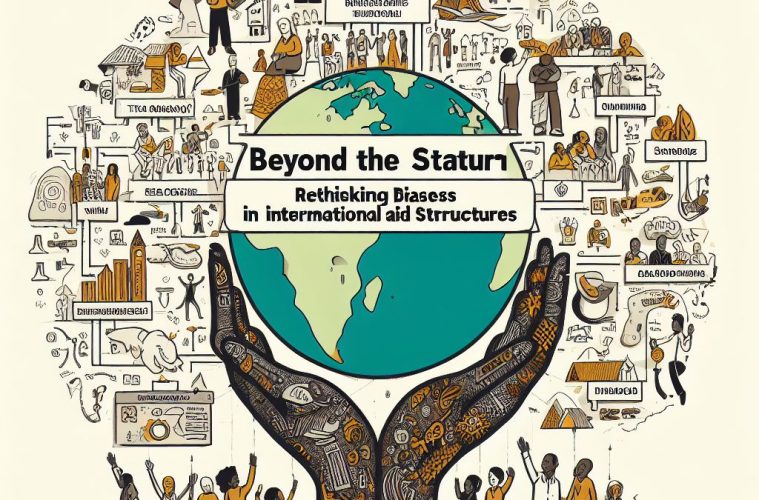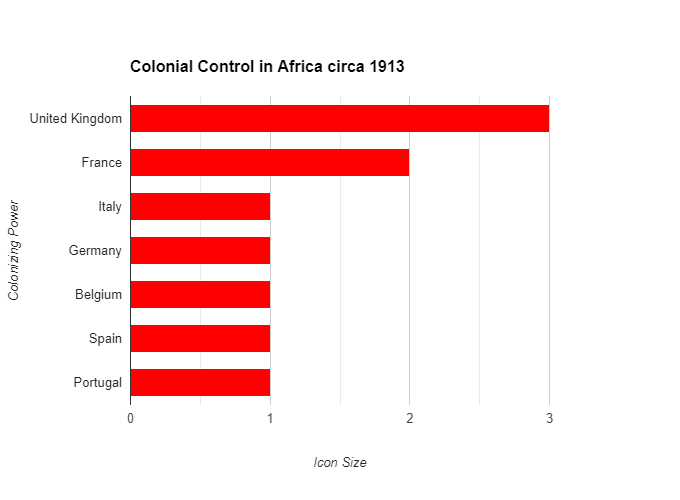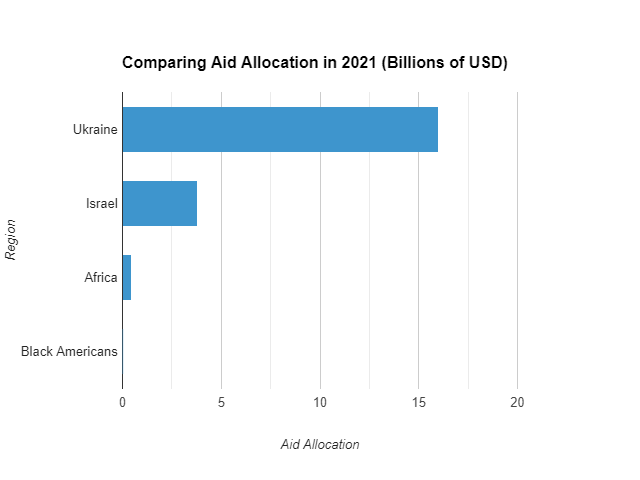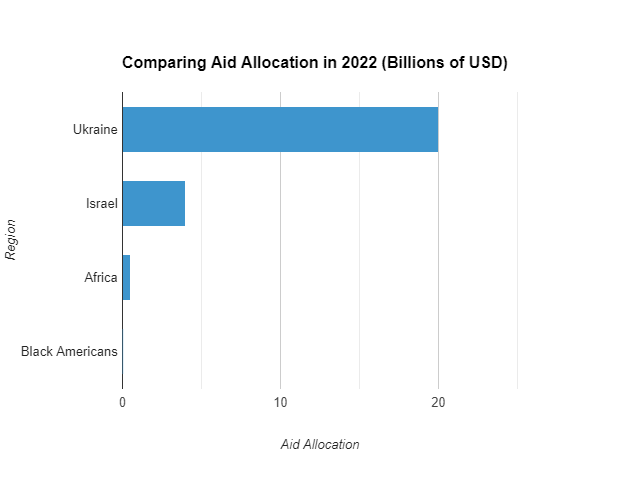In the complicated world of global aid and development, there are persistent differences in how help and resources are given. These differences are shaped by a mix of historical, political, and economic factors. This article aims to untangle the roots of these imbalances, focusing on the long-lasting impact of colonialism in Africa, the influence of political alliances, and the unequal effects of policies by organizations like the International Monetary Fund (IMF). Additionally, it looks at the clear differences in the amount of aid given to different places, criticisms of certain economic programs, and efforts trying to make the distribution of help more fair.
Historical Context: Colonial Legacy and Geopolitical Alliances
Colonial legacy: The European powers divided Africa into artificial boundaries that ignored the existing ethnic, cultural, and religious diversity of the continent. This resulted in conflicts, oppression, and exploitation of the colonized peoples. The colonial powers also extracted the natural resources and wealth of Africa, leaving behind underdeveloped and dependent economies. The colonial legacy still affects the political, social, and economic structures of many African countries today1.
Geopolitical alliances: The global power dynamics and interests of the former colonial powers and other influential actors also shape the relations and interactions with African countries. For example, the Cold War era saw the involvement of the US and the Soviet Union in supporting different factions and regimes in Africa, often fueling civil wars and instability. The post-Cold War era witnessed the emergence of new actors, such as China and India, that have increased their economic and political ties with Africa. The geopolitical alliances often influence the aid policies, trade agreements, and security cooperation with African countries, sometimes with positive or negative consequences23.
To understand the disparities in aid response, it is important to examine the historical context of colonialism and geopolitical alliances. The legacy of colonialism in Africa has left lasting economic scars, marked by exploitation and resource extraction. The impact of colonialism is still felt today, with unequal power structures that continue to shape social relations between former colonizers and colonized peoples4.
Geopolitical alliances further complicate the issue, with historical relationships influencing aid decisions. For example, Ukraine and Israel have received significant aid from the United States and other countries, while black and African communities have been subjected to structural adjustment programs that have led to austerity measures, privatization of public services, and other measures that have had a negative impact on their economic development5.
These factors contribute to the uneven distribution of resources, leaving African nations grappling with the enduring consequences of a troubled past. It is important to continue to raise awareness about the disparities that exist and to advocate for policies that promote economic development and social justice for all communities. This requires a sustained effort from governments, civil society organizations, and individuals alike.
Resources
1.https://www.dw.com/en/separatism-in-africa-exploring-colonial-legacies/a-55805551
2.https://isreview.org/issue/103/legacies-colonialism-africa/index.html
3.https://link.springer.com/chapter/10.1007/978-3-030-62183-
4_84.https://anthropologyreview.org/anthropology-glossary-of-terms/colonialism-acquiring-and-maintaining-control-over-another-country-or-territory/
5.https://www.bisa.ac.uk/articles/how-do-colonial-legacies-shape-contemporary-global-political-economy
Anthropology Review Database. “Colonialism – Acquiring and Maintaining Control Over Another Country or Territory.” (Source: Anthropology Review Database)
British International Studies Association. “How Do Colonial Legacies Shape Contemporary Global Political Economy?” (Source: British International Studies Association)
Follow the Money: Understanding Aid Allocation Discrepancies in Israel, Ukraine, and Africa
The discrepancies in aid distribution among Israel, Ukraine, and African nations are underscored by substantive financial figures, revealing a complex landscape that demands a comprehensive examination. According to the Organization for Economic Cooperation and Development (OECD), sub-Saharan Africa, traditionally the foremost beneficiary of development aid, experienced an 8% decline in aid, amounting to 29 billion dollars. In stark contrast, Ukraine witnessed a remarkable surge in aid, reaching 16 billion dollars, a significant escalation from the preceding year’s less than one billion dollars. This striking financial incongruity has prompted concerns over a perceived double standard in Western countries’ approach to aid distribution (Africanews, 2023).
Moreover, Israel’s substantial military aid from the United States, totaling billions of dollars, has been pivotal in maintaining its military occupation of Palestine. This financial support, while contributing to Israel’s defense capabilities, also raises questions about the equity and geopolitical implications of such allocations (Globes, 2023).
These substantial disparities in aid allocation have profound implications for the economic development of African nations. Structural adjustment programs, implemented in response to the conditions attached to aid, have led to austerity measures, privatization of public services, and other economic policies negatively affecting these regions. The financial ramifications of these programs extend beyond the numerical figures, influencing the broader economic landscape and raising questions about the long-term impact on sustainable development in these nations (Africanews, 2023).
To address these significant aid imbalances, there is a pressing need for ongoing awareness initiatives and advocacy for policies fostering economic development and social justice for all communities. This entails a sustained effort from governments, civil society organizations, and individuals to navigate the intricate web of geopolitical and economic factors shaping aid distribution on the global stage.
Resources
- “Africa Denounces Western Countries’ Aid Double Standard.” Africanews. (Source: Africanews)
- “World Inequality Report: Israel Among Most Unequal Countries.” Globes. (Source: Globes)
Shattered Promises: Evaluating the Social Justice Implications of IMF Policies in African Nations
The IMF’s structural adjustment programs have been widely criticized for their negative impacts on the social and economic development of African countries. These programs, which are often imposed as a condition for receiving IMF loans, typically involve measures such as cutting public spending, liberalizing trade, privatizing state-owned enterprises, and devaluing the currency. While these policies are intended to stabilize the macroeconomic situation and promote growth, they often have harmful consequences for the poor and marginalized groups, such as:
- Reduced access to basic services: Structural adjustment programs often lead to a decline in public spending on health, education, and social protection, which affects the quality and availability of these services for the population, especially the poor and rural areas. For example, a UNDP study found that structural adjustment programs in 36 African countries resulted in a 50 percent drop in health spending per capita and a 25 percent drop in education spending per capita between 1980 and 1990 1.
- Increased poverty and inequality: Structural adjustment programs often exacerbate poverty and inequality by reducing the income and employment opportunities of the poor, while benefiting the wealthy and the urban elites. For example, a World Bank study found that structural adjustment programs in 29 African countries increased the poverty rate by 2.4 percentage points and the Gini coefficient by 1.8 points between 1981 and 1994 2.
- Impeded sustainable development: Structural adjustment programs often undermine the long-term development prospects of African countries by neglecting the environmental and social dimensions of development. For example, structural adjustment programs often encourage the exploitation of natural resources, such as minerals and forests, without adequate regulation and protection, leading to environmental degradation and conflicts. Moreover, structural adjustment programs often ignore the specific needs and aspirations of the local communities, such as cultural rights, gender equality, and participatory governance, leading to social unrest and violence.
Therefore, it is important to critique the IMF policies and to advocate for alternative approaches that are more responsive to the diverse and complex realities of African countries. These approaches should be based on the principles of human rights, social justice, and ecological sustainability, and should involve the active participation and empowerment of the people, especially the poor and marginalized groups.
(1) “Stepping Up With and For Africa” – IMF. https://www.imf.org/en/News/Articles/2022/02/18/sp021822-stepping-up-with-and-for-africa.
(2) Growing Together The IMF and African Low-Income Countries. https://www.imf.org/en/Publications/fandd/issues/2021/12/Africa-Low-Income-Countries.
(3) The Impacts of the World Bank and IMF Structural Adjustment Programmes …. https://papers.ssrn.com/sol3/papers.cfm?abstract_id=2056391.
(4) Regional Economic Outlook for Sub-Saharan Africa, October 2022 – IMF. https://www.imf.org/en/Publications/REO/SSA/Issues/2022/10/14/regional-economic-outlook-for-sub-saharan-africa-october-2022.
(5) Africa, the IMF and the World Bank – JSTOR. https://www.jstor.org/stable/722746.
Empowering Change: Initiatives for Equitable Global Aid through Locally-led Development and Sustainability
There are many initiatives and programs that aim to address the disparities that exist in global aid and development. Projects emphasizing locally-led development, participatory decision-making, and sustainability are gaining traction. For example, the United Nations Development Programme’s “Africa Adaptation Initiative” aims to help African countries adapt to the impacts of climate change. Similarly, the African Development Bank’s “Affirmative Finance Action for Women in Africa” aims to increase access to finance for women entrepreneurs 1. https://www.africa.com/african-development-banks-afawa-hits-1-billion-investment-milestone-in-lending-to-women-entrepreneurs-in-africa/
These initiatives are targeting specific needs and fostering inclusivity. They are a step in the right direction towards equitable aid. It is important to continue to raise awareness about the disparities that exist and to advocate for policies that promote economic development and social justice for all communities. This requires a sustained effort from governments, civil society organizations, and individuals alike.
Case Studies:
United Nations Development Programme’s “Africa Adaptation Initiative”:
- This initiative focuses on assisting African countries in adapting to the impacts of climate change. By centering on the specific needs of the continent, it exemplifies a locally-tailored response to a pressing global challenge.
African Development Bank’s “Affirmative Finance Action for Women in Africa” (Afawa):
- Afawa, reaching a significant milestone with a $1 billion investment, aims to increase access to finance for women entrepreneurs in Africa. This initiative recognizes the importance of gender-inclusive economic development and seeks to address financial disparities.
Here are a few more case study examples of locally-led development initiatives:
Self Employed Women’s Association (SEWA) in India: This organization helps empower women in the informal sector through access to finance, capacity building and promoting their rights. Their participatory approach has improved outcomes.
- Slum Dwellers International: This network spanning Africa, Asia and Latin America helps urban poor communities develop solutions to poverty and inequality. They facilitate community-led saving and credit groups.
- Satkhira Unnayan Sangstha (SUS) in Bangladesh: This NGO focuses on community-based adaptation to climate change impacts in coastal areas. They rely on local knowledge and grassroots women’s leadership.
- Forest Conservation Committees in Nepal: These committees increased forest cover by involving local community governance and stewardship of resources. They reduced illegal logging and enhanced sustainability.
- Participatory Budgeting in Brazil: This democratic process lets citizens influence budget spending priorities in their municipalities, enabling inclusive development. Porto Alegre is a noteworthy example.
- Barangay Integrated Development Approach for Nutrition Improvement in the Philippines: This initiative reduced malnutrition by 50% using local health volunteers and inter-sectoral collaboration.
Discover the strength inherent in diverse models of community-led development, emphasizing local priorities, knowledge, and leadership. These case studies showcase the resilience and success of initiatives driven by communities in the Global South, presenting a powerful alternative to traditional top-down aid programs.
Towards Equitable Aid:
These initiatives represent pivotal steps towards achieving more equitable aid practices. By targeting specific needs and fostering inclusivity, they provide a template for future endeavors. However, it is crucial to acknowledge that sustained effort is required to address the root causes of disparities comprehensively.
Voices Unheard: Transformative Approaches to Bridging Aid Disparities
We must agree that diverse perspectives are essential to enrich the discourse on global aid and development. Insights from both donor and recipient countries provide nuanced viewpoints, shedding light on the complexities and nuances inherent in the global aid landscape. This diversity of voices helps foster a more comprehensive understanding of the issues at play.
For example, the International Monetary Fund (IMF) has been criticized for its policies that have led to economic instability in many developing countries. This has disproportionately affected black and African communities, who have been subjected to structural adjustment programs that have led to austerity measures, privatization of public services, and other measures that have had a negative impact on their economic development.
Ensuring that the voices of marginalized communities are heard in discussions about global aid and development is essential to promoting equitable outcomes. There are many ways to achieve this goal. Here are some examples:
- Encourage flexible and iterative approaches to program design and implementation: This can help ensure that programs are tailored to the specific needs of marginalized communities and that they have a say in how programs are designed and implemented 1.
- Include local actors in decision-making from start to finish: This can help ensure that the perspectives and needs of marginalized communities are taken into account throughout the development process 1.
- Increase technical capacity building: This can help build the skills and knowledge of local actors, enabling them to participate more effectively in discussions about global aid and development 1.
- Work with existing governance and finance mechanisms and networks to achieve scale and reduce transaction costs: This can help ensure that programs are sustainable and have a lasting impact 1.
- Build the evidence base on locally led adaptation: This can help ensure that programs are evidence-based and that they are effective in achieving their intended outcomes 1.
- Partner with organizations that are doing the same work as you: This can help build networks and coalitions that can work together to achieve common goals 2.
- Support people of color who are leaders: This can help ensure that the perspectives and needs of marginalized communities are represented in discussions about global aid and development 2.
- Use your privilege to help others: This can help amplify the voices of marginalized communities and promote social justice 2.
Citations:
1.https://publications.wri.org/locally-led-climate-adaptation
2.https://www.cnn.com/2020/05/30/us/how-to-be-an-ally-guide-trnd/index.html
It is important to continue to raise awareness about the disparities that exist and to advocate for policies that promote economic development and social justice for all communities. This requires a sustained effort from governments, civil society organizations, and individuals alike.
Forging a Fairer Future: Recommendations for Systemic Reforms in Foreign Aid Governance
As the global community grapples with persistent disparities in foreign aid allocation, the imperative for systemic reforms becomes increasingly apparent. This section explores vital recommendations aimed at instilling accountability, transparency, and participatory processes in foreign aid governance. By advocating for these reforms and prioritizing equitable distribution, we can pave the way for a more just and inclusive international aid landscape.
- Embedding Accountability in Foreign Aid Governance:
Accountability forms the bedrock of effective governance. To address aid disparities, it is crucial to establish clear lines of responsibility and mechanisms for oversight. This entails holding both donor and recipient nations accountable for the allocation and utilization of aid funds. Implementing robust monitoring and evaluation frameworks will ensure that aid objectives are met, fostering trust among stakeholders. - Transparency as a Pillar of Equitable Aid Distribution:
Transparency is essential for building trust and dismantling the opacity that often shrouds foreign aid processes. Donor nations should disclose aid allocation criteria, decision-making processes, and the terms of agreements. Simultaneously, recipient nations must ensure transparency in how aid funds are utilized, promoting open communication and fostering accountability. Transparent reporting mechanisms will enable the global community to track the flow and impact of aid more effectively. - Incorporating Participatory Processes:
Inclusivity is paramount in shaping policies that affect diverse communities. Implementing participatory processes in foreign aid governance involves engaging a spectrum of stakeholders, including civil society organizations, local communities, and experts. By including the perspectives of those directly affected by aid policies, decision-makers can make more informed choices that better address the unique needs and challenges of each community. - Strengthening International Institutions:
International institutions play a pivotal role in shaping the global aid landscape. Strengthening these institutions, such as the International Monetary Fund (IMF) and the World Bank, requires a commitment to representation and inclusivity. Reforms should focus on diversifying leadership, ensuring a broader range of voices are heard, and fostering collaboration among nations. A more inclusive governance structure will contribute to decisions that better reflect the varied needs of the global community. - Revision of Policies to Prioritize Equitable Distribution:
At the core of systemic reform is the revision of existing policies to center on equitable distribution. This involves reassessing criteria for aid allocation, considering the specific needs of recipient nations, and moving away from one-size-fits-all approaches. Policies should be adaptive, responsive, and designed to address the root causes of disparities, fostering sustainable development and long-term resilience.
The path to a fairer foreign aid landscape lies in the conscientious implementation of these systemic reforms. Accountability, transparency, participatory processes, and the revision of policies are interlinked components that, when enacted collectively, hold the potential to dismantle longstanding structures perpetuating disparities. By championing these recommendations, the global community can contribute to a more equitable, responsive, and effective foreign aid system that serves the needs of all nations, regardless of their geopolitical standing.
Conclusion: An Interconnected World Demands Equitable Aid
In summary, rectifying aid disparities is not merely a matter of moral duty; it stands as a vital necessity for the interconnectedness of our global community. Through a conscientious acknowledgment of historical injustices, a critical examination of prevailing policies, and wholehearted support for initiatives promoting equity, we can work towards a world where aid is dispensed equitably. This vision ensures that every community, irrespective of its geopolitical significance, receives the necessary support for authentic and sustainable development.









